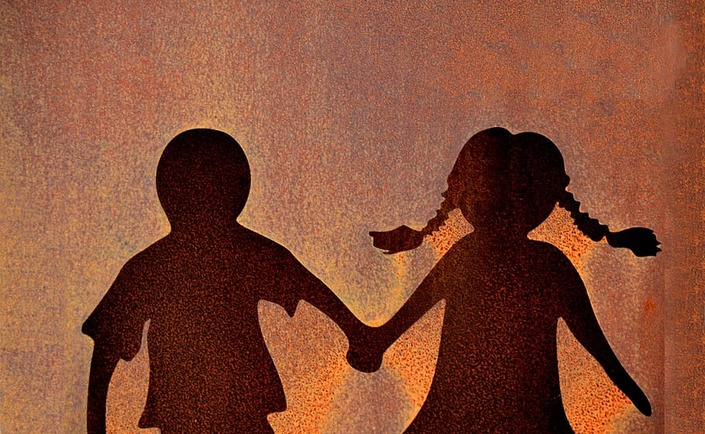|
By Georgina Gonzalez
Children are like sponges. They soak up everything around them, absorbing every new experience and sensation. Their developing brains attempt to process the influx of information that comes as they navigate the world around them, and slowly, they begin to learn. It’s no doubt that they quickly become products of their environments and internalize everything they have or haven’t been exposed to. How early do children begin to pick up on the darker divisions of our society? How fast do they internalize the bias and prejudice of the world around them? How quickly do these innocent, easily impressionable children become a part of the problem of discrimination? A study done in 2005 showed that infants as young as three months old have a ‘same-race’ preference. The infants tended to look at faces of their own race longer than those of other races. This finding doesn’t necessarily insinuate that these infants already had racial prejudices, but rather that the faces of their own race felt more familiar to them and were, therefore, more relatable to them. We are attracted to what we know, and for a young child, the face of a parent or relative means security and protection. Interestingly, infants younger than three months old did not exhibit a similar preference and viewed all faces for an equal length of time. Before this critical age, children haven’t yet picked up on the superficial differences that exist between races. They are still naive to the things that divide us, having not yet absorbed societal ideals, and instead exhibit a beautiful kind of openness to everyone. A later study published in Developmental Science in 2014 using slightly older children revealed the insidious nature of internalized prejudice. Chinese four-year-olds were asked to look at computer generated faces of stereotypical Chinese, African, and racially mixed (African and Chinese) people. These racially ambiguous faces displayed a neutral, happy, or sad expression. The children were then asked to identify whether the face they were shown was of their ‘own-race’ or of ‘other-race.’ The results of this experiment showed that children were more likely to categorize the happy, racially ambiguous faces as Chinese and were 20 percent more likely to categorize the angry racially ambiguous faces as African, despite both faces equally representing the Chinese and African races. This finding, although discouraging, can act as a tool to help us understand the roots of implicit bias toward other races. Still, it reveals that children are influenced by these prejudices at a younger age than we previously imagined. Reversing this bias may seem like an arduous feat, given that these prejudices are so quickly instilled in children. However, the 2014 study found that reversing this implicit bias in young children is relatively easy. The same group of children were tasked with memorizing a specific number that corresponded to each face and then completing an activity in which they matched each face to the correct number. This task projected the concept of individuality to these seemingly similar faces, promoting the idea that each face represented a different person with a unique identity. When the children completed the original test again after the face-individualization training, they were no more likely to identify angry faces with other-race identities than to identify happy faces with own-race identities, whereas before the training, children were 1.44 times more likely to do so. The reversal of the children’s implicit bias plants a seed of hope, encouraging the idea that exposure to members of other races helps to reduce prejudice through realization of individuality. Although these harmful biases were acquired early in life, the relative ease with which they were reversed is promising. Forming relationships with people who are different from us can help undo some of the damage society brings on us regarding race. When we interact with those who are different from ourselves, we can empathize more and see past the label of race. Studies like this are crucial, now more than ever, because they reassure us that we are not merely helpless individuals already irreversibly influenced by society but instead have the power to change our habits of mind and those of future generations.
0 Comments
Leave a Reply. |
Categories
All
Archives
April 2024
|

